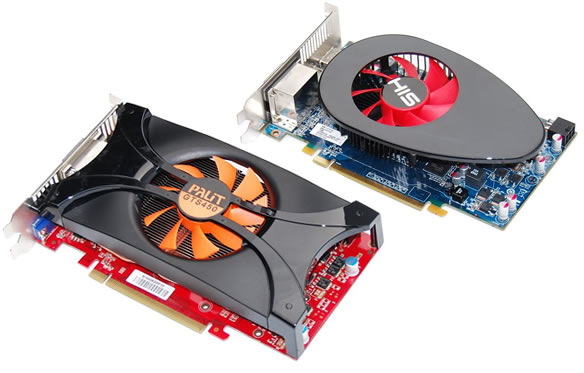Final Thoughts
The Radeon HD 5750 was released almost a year ago and during this period it has only had to contend with older Nvidia DirectX 10 graphics cards such as the GeForce GTS 250. With the arrival of the GeForce GTS 450, the mainstream Radeon range has finally found some competition.
The GeForce GTS 450 is a great option for gamers looking to spend just over $100 on a new graphics card. It's not just the price that makes it a sensible choice, but we found it to be very efficient, using less power than the Radeon HD 5770 under full load and less than the 5750 at idle. The operating temperatures of the Palit version that we tested were also very low and at no point the graphics card made its presence apparent thanks to its low operating volume.
But like with any graphics card aimed at gamers the key for success has to be raw performance. In this regard the GeForce GTS 450 certainly holds its own, just don't expect anything extraordinary like we saw with the GTX 460. On a clever move, AMD anticipated this release and adjusted pricing of the Radeon HD 5770 and 5750 boards. This means that unless we see discounts on the GTS 450 offerings right away, the marginal price difference between the new GeForce and competing Radeons will be more or less reflected on performance.
Although on average the GeForce GTS 450 was slightly faster than the Radeon HD 5750 in the dozen games that we tested with, realistically the performance gap between these two cards is minimal. The Radeon HD 5750 was faster in five games, while the GeForce GTS 450 was faster in other five titles, and they drew in the remaining two. The difference was that when the GeForce GTS 450 was faster it tended to do so by a larger margin.

AMD anticipated to this release by cutting prices on its mainstream Radeon range.
The Radeon HD 5750 and the new GeForce GTS 450 are a near match in both pricing and performance.
Then again if you are after the best value on a gaming graphics card, the biggest threat comes from the GeForce GTX 460 (768MB). The GeForce GTS 450 is 24% cheaper which works out to be a mere $40, in our opinion this is not a great deal of money for something you are likely to keep for at least a year or two.
Nvidia prefers to see it from another angle... if you are building a budget system and won't be using a large LCD monitor (19 to 22"), the GeForce GTX 460 (768MB) will be for the most part wasted, while the GeForce GTS 450 will be just right for those gaming at 1680x1050 resolutions and below. This is not untrue, so something to keep in mind. On the other hand, with 24" LCD monitors starting to reach $200, we could back and forth around those facts.
We were glad to see that the GeForce GTS 450 is another Fermi part that has amazing overclocking abilities. We had no issues boosting the core frequency by almost 200MHz which is incredible. This overclock provided 18% more performance which at times helped the GeForce GTS 450 match the Radeon HD 5830 while outperforming a stock clocked Radeon HD 5770.
We also presented you with SLI performance figures across all tests, confirming once again the scaling superiority it has over Crossfire. A pair of GeForce GTS 450 boards performed better than two Radeon HD 5770 boards, and of course you will be paying slightly less for the GeForce cards. However the fact remains that two GTX 460 cards on SLI are even better if raw gaming performance is what you are after, in spite of the widened price gap when buying two boards.